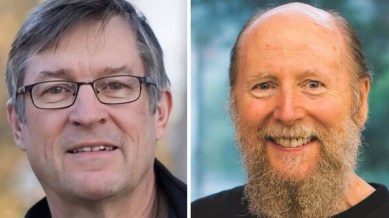Turing Award goes to 2 pioneers of Artificial Intelligence
Andrew Barto and Richard Sutton developed reinforcement learning, a technique vital to chatbots like ChatGPT.

Written by Cade Metz
In 1977, Andrew Barto, as a researcher at the University of Massachusetts, Amherst, began exploring a new theory that neurons behaved like hedonists. The basic idea was that the human brain was driven by billions of nerve cells that were each trying to maximize pleasure and minimize pain.
On Wednesday, the Association for Computing Machinery announced that Barto and Sutton had won this year’s Turing Award for their work on reinforcement learning. The Turing Award is often called the Nobel Prize of computing; the two scientists will share the $1 million prize.
Over the past decade, reinforcement learning has played a vital role in the rise of artificial intelligence technologies such as Google’s AlphaGo and OpenAI’s ChatGPT. The techniques that powered these systems were rooted in the work of Barto and Sutton.
Their book, “Reinforcement Learning: An Introduction,” which was published in 1998, remains the definitive exploration of an idea that many experts say is only beginning to realize its potential.
“They are the undisputed pioneers of reinforcement learning,” said Oren Etzioni, a professor emeritus of computer science at the University of Washington and founding CEO of the Allen Institute for Artificial Intelligence.
Psychologists have long studied the ways that humans and animals learn from their experiences. In the 1940s, British computer scientist Alan Turing suggested that machines could learn in much the same way.
But it was Barto and Sutton who began exploring the mathematics of how this might work, building on a theory that A. Harry Klopf, a computer scientist working for the government, had proposed. Barto went on to build a lab at UMass Amherst dedicated to the idea, while Sutton founded a similar kind of lab at the University of Alberta in Canada.
Eventually, they say, robots imbued with AI will learn from trial and error in the real world, as humans and animals do.
This article originally appeared in The New York Times.